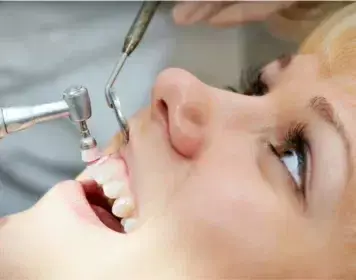A person’s smile plays a major role in how they are perceived and how they feel about themselves. For individuals looking to make subtle or significant improvements to their appearance, cosmetic dentistry offers a wide range of solutions. These treatments focus on enhancing visual harmony, correcting minor imperfections, and boosting self-image through precise and artistic dental techniques. With advances in materials and methods, cosmetic enhancements now appear more natural than ever while offering long-lasting results.
Improving Tooth Color and Brightness
Tooth discoloration can occur gradually over time due to coffee, tea, tobacco, medication, or age-related changes. Teeth whitening procedures offered by cosmetic dentists provide a more noticeable improvement compared to over-the-counter options. Professional whitening helps lift stains and restore a brighter, cleaner appearance that reflects good health and personal care. Veneers or bonding may also be recommended for cases where discoloration does not respond to bleaching. These treatments can dramatically transform how someone’s smile looks with minimal time in the chair.
Teeth that are worn, uneven, or oddly shaped can affect the symmetry of a person’s face. Cosmetic dentistry corrects these issues by reshaping or restoring teeth to match the natural contours of the mouth. Composite bonding, enamel recontouring, and porcelain veneers are common techniques used to create better proportion and alignment. These improvements often result in a more balanced and harmonious smile, which contributes to a more youthful and energetic appearance overall.
Addressing Spacing and Gaps
Gaps between teeth, especially in the front, may draw attention away from other facial features. While some individuals embrace these characteristics, others may choose to close or minimize them for a smoother smile line. Cosmetic dentists use bonding, aligners, or veneers to reduce spacing and guide the teeth into a more uniform position. These changes can also support better oral hygiene by eliminating areas where food may collect or flossing becomes difficult.
The condition of the teeth and jaw has a direct impact on the lower third of the face. When teeth are missing, worn down, or misaligned, facial volume may appear reduced, and wrinkles around the mouth can become more pronounced. Cosmetic dentistry restores support to the lips and cheeks by building up the tooth structure with crowns, bridges, or implants. These enhancements subtly lift the face and restore a fuller, more refreshed appearance without the need for surgical intervention.
The benefits of cosmetic dentistry extend beyond the physical changes. Many people report improved self-confidence and a stronger desire to engage socially after completing treatment. Smiling more freely can influence how others respond and may create more positive interactions in both personal and professional settings. When individuals feel better about how they present themselves, their confidence often translates into posture, expression, and communication. These psychological effects contribute to a stronger sense of well-being.
Customizing Treatment for Individual Goals
No two smiles are exactly alike, and cosmetic dentistry emphasizes personalization in every treatment plan. Dentists assess factors such as skin tone, facial shape, bite function, and the natural shade of surrounding teeth to create enhancements that appear seamless. By tailoring the approach, providers help patients achieve results that align with their personal preferences rather than a one-size-fits-all aesthetic. This customization allows for subtle changes or full transformations, depending on each person’s comfort and goals.
Schedule a Cosmetic Dentistry Consultation
Cosmetic treatments often improve more than just looks—they may also support better oral function. Correcting chips, cracks, or alignment issues reduces strain on certain teeth and helps distribute bite forces more evenly. Restoring the structure of worn teeth can make chewing more comfortable and reduce the risk of future damage. When cosmetic care aligns with functional needs, it contributes to long-term oral stability and helps prevent further deterioration.

